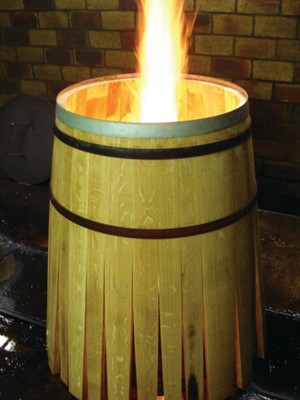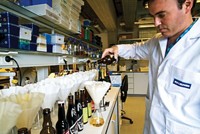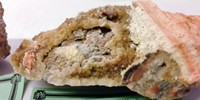Advertisement
Grab your lab coat. Let's get started
Welcome!
Welcome!
Create an account below to get 6 C&EN articles per month, receive newsletters and more - all free.
It seems this is your first time logging in online. Please enter the following information to continue.
As an ACS member you automatically get access to this site. All we need is few more details to create your reading experience.
Not you? Sign in with a different account.
Not you? Sign in with a different account.
ERROR 1
ERROR 1
ERROR 2
ERROR 2
ERROR 2
ERROR 2
ERROR 2
Password and Confirm password must match.
If you have an ACS member number, please enter it here so we can link this account to your membership. (optional)
ERROR 2
ACS values your privacy. By submitting your information, you are gaining access to C&EN and subscribing to our weekly newsletter. We use the information you provide to make your reading experience better, and we will never sell your data to third party members.
Environment
Monitoring Oak Wood Toasting On The Fly
Analytical Chemistry: Field-deployable method could allow online monitoring of the process for making wine and whiskey barrels
by Celia Henry Arnaud
December 11, 2015

Researchers have developed an analytical method for monitoring the toasting of oak wood, a key step in the construction of barrels used to age wine and spirits. Toasting makes dried wood pliable enough to be shaped into a barrel. At the same time, it creates aroma compounds that affect the flavor of the alcoholic beverage stored in the finished barrel.
A project led by Ross R. Farrell, a graduate student at the University of Tasmania who is currently a researcher at ETH Zurich, used proton-transfer-reaction time-of-flight mass spectrometry to identify volatile compounds released as oak boards were toasted in an oven at various combinations of time and temperature (Sci. Rep. 2015, DOI: 10.1038/srep17334). Unlike other methods for monitoring toasting, which require extensive sample preparation, the new method allows the process to be monitored in real time. In addition, the researchers used a field-deployable type of mass spectrometer, so the system could be installed in a cooperage for online monitoring of the toasting process.
The team collected time-intensity profiles at various temperatures for compounds released during toasting. Furfural, a breakdown product of hemicellulose, was the most abundant compound. Other compounds studied included guaiacol, vanillin, oak lactone, and eugenol. In an interesting observation, the researchers heard occasional cracking during toasting, which corresponded to spikes in the time-intensity profiles, indicating sudden rapid release of compounds.
“There is extensive variability in composition among boards during toasting,” says Susan E. Ebeler, a wine expert at the University of California, Davis. “The ability to monitor these differences could allow adjustments to toasting temperatures and times, resulting in improved consistency in barrel composition.”
Ebeler adds she would like to see monitoring of an actual barrel during open-flame toasting, not just a board in an oven. Farrell responds that he already has a design for that type of sampling system. “Monitoring of barrel toasting could be readily achieved,” he says.
But, Farrell notes, barrel alternatives such as oak boards and chips are also used to mature wine. “Barrel alternatives are less well defined in terms of aromatic quality than their barrel counterparts, and thus improving quality control of those products is very important from an industry perspective,” he says.
“I am passionate about bringing frontier technologies to the world of wood and wine,” Farrell adds. “The ultimate goal is to provide winemakers with precision oak products that can be used to realize their vision for the wines they seek to create.”





Join the conversation
Contact the reporter
Submit a Letter to the Editor for publication
Engage with us on Twitter